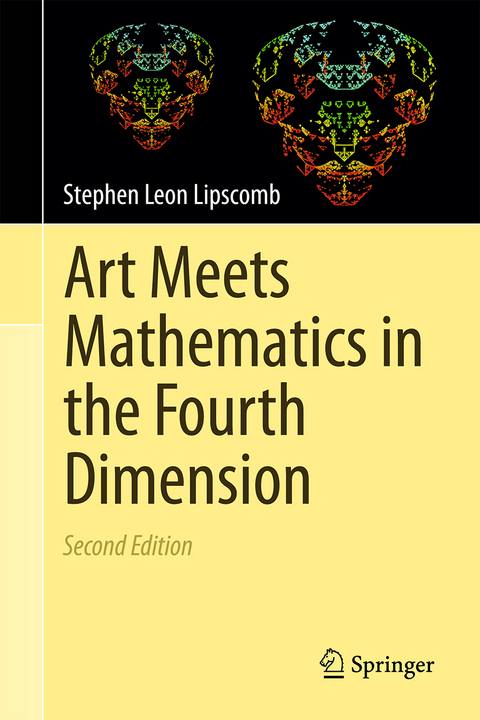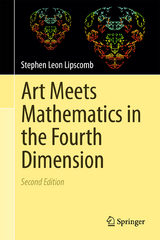Art Meets Mathematics in the Fourth Dimension
Springer International Publishing (Verlag)
978-3-319-06253-2 (ISBN)
A graduate of Fairmont State University BA; West Virginia University MA, and the University of Virginia Ph.D., where the late G. T. Whyburn (past president of the AMS) was his advisor. And prior to Chairing the Department of Mathematics, Physics, and Computer Science at the University of Mary Washington, Lipscomb was a U. S. Navy senior mathematician involved with the Trident Missile system and served as Team Chair of an Operational Evaluation of the Tomahawk Missile system. In the 1970s, the author solved a half-century old embedding problem in dimension theory. His solution, upon review by a Transactions of the American Mathematical Society (AMS) referee, was called "an outstanding contribution to dimension theory". In 2009 the author's feature article The Quest for Universal Spaces in Dimension Theory appeared in the December issue of the Notices of the AMS, and his book Fractals and Universal Spaces in Dimension Theory was published in the outstanding Springer Monographs in Mathematics Series. It turned out that the classical fractals known as Sierpinski's triangle and cheese where corollary to the author's solution. And at the beginning of the 21st Century, James Perry introduced another example (the 4-web) of the author's construction that lived in the Fourth Dimension. Perry's example is fundamental to this book. During the 1990s, the author introduced an extension of Cauchy's cycle notation in group theory to path notation in semi-group theory. He used his path notation to construct new semi-groups, e.g., the alternating semi-groups. By 1996, the author's work with his path notation was documented by the AMS in Volume 46 Symmetric Inverse Semigroups of its prestigious Mathematical Surveys and Monographs Series. Circa 2000 the author realized, because the triangle is the Holy Grail of strength design, that the 4-web would be ideal for practical applications. By 2005 he obtained a US patent and designed medical 4-web spine cages. Then Jessee Hunt created 4-Web, Inc., the cages eventually became FDA approved for human implantation, and the implants began in 2011.
1. 3-Sphere.- 2. Dante's 3-Sphere Universe.- 3. Einstein and the 3-Sphere.- 4. Einstein's Universe.- 5. Images of S1 and S2.- 6. Four-Web Graph Paper.- 7. The Partial Picture.- 8. Generating the Hyper-sphere Art.- 9. Prelude to Chapters 10 and 11.- 10. Great 2-Spheres.- 11. Images of Great 2-Spheres.- Appendix 1.- Appendix 2.- Appendix 3. Inside S3 and Questions.- Appendix 4. Mathematics and Art.
| Erscheint lt. Verlag | 3.11.2014 |
|---|---|
| Zusatzinfo | XVII, 184 p. 147 illus., 28 illus. in color. |
| Verlagsort | Cham |
| Sprache | englisch |
| Maße | 178 x 254 mm |
| Gewicht | 605 g |
| Themenwelt | Mathematik / Informatik ► Mathematik ► Angewandte Mathematik |
| Mathematik / Informatik ► Mathematik ► Geometrie / Topologie | |
| Naturwissenschaften | |
| Schlagworte | 3-sphere • 4-web • Art and Mathematics • fourth dimension • Fractals • hypersphere |
| ISBN-10 | 3-319-06253-0 / 3319062530 |
| ISBN-13 | 978-3-319-06253-2 / 9783319062532 |
| Zustand | Neuware |
| Haben Sie eine Frage zum Produkt? |
aus dem Bereich




